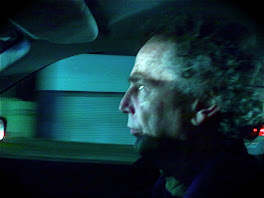Yasmar is Ramsay backwards. It is, the guide says, a classic Georgian townhouse. Intact, though literally crumbling, in its original gardens. The wings where croquet and tennis were played excised to make a children's prison. When at last we are allowed to enter, hairnets on our heads under hard hats, the little girl who ran so cheerfully around outside begins to cry and cannot be consoled. It is the sadness in the air, it's the ghosts—not those of Ensign Bayley or Simeon Lord, nor the Ramsays and Learmouths, nor even Albert Edward Grace of Grace Bros. and his wife Selina, called Gypsy—but the ghosts of the young perpetrators, excised from their quite possibly dysfunctional families and incarcerated here after the war. They creep out of the walls like damp, they hang from the architraves, they linger in the pissy smell rising from the fireplaces with their elegant, Edwardian, wooden surrounds. They are thick in the bathrooms out back where the stables were, the girls' decorated with absurd pink and yellow sixties flowers, the boys' painted a vile orange. Thick as the webs of orb spiders in the weedy kitchen garden. The house at once so grand and so small, double doors opening in the hallway entrance to make a diminutive ballroom. Here the Court Sessions were held, here the children were condemned to whatever period of incarceration was to be theirs in the unseen, 1980s cell blocks behind the brick walls either side of the garden with its teardrop rose garden and rare exotics. Beautiful glass, asymmetric, bizarre, a mid-Victorian chivalrous fantasy out of Burne-Jones perhaps. As if Haberfield were the demesne of some knight errant who would right all future wrongs. Where did they sleep? The old ones, I mean, the house seems to consist only of living rooms. Greek revival, the hand-out says. 1856. Sandstone blocks, flagstone verandas with cast-iron posts, a Welsh slate roof. At the top of the hill, where my taxi base is now, stood Dobroyde House, the original Ramsay seat. They were big in the Linnean Society. They supported the Australian Museum, founded plant nurseries for the Garden Suburb. They're all buried in the family plot at St David's churchyard over in Dalhousie Street. Out front, in the heat and bustle of Parramatta Road at midday on a Saturday, you can see how the gardens were laid out, after the style of Queen Victoria's designer Louden, so as to hide the long, low, house from view. Now there are hurricane fences to confine those institutional ghosts, wailing still and forever in the bright sticky air as I mumble off down the hill towards Bland Street.
skip to main |
skip to sidebar
You are always at a nodal point where destiny forks ...
